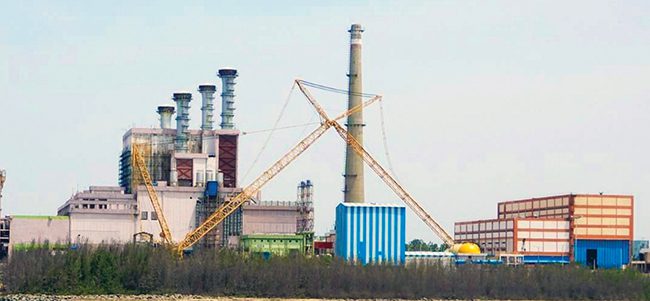India's Prototype Fast Breeder Nuclear Reactor Moves Closer to Criticality
India’s Atomic Energy Regulatory Board (AERB) will allow the country’s flagship 500-MWe/1,250-MWth prototype fast-breeder reactor (PFBR) in Kalpakkam, Tamil Nadu, to approach criticality.
The nuclear energy safety watchdog on July 30 granted state-owned Bharatiya Nabhikiya Vidyut Nigam Ltd. (BHAVINI) permission to embark on the final stage of core loading following assessments, extensive safety reviews, and plant visitation. The action responds to BHAVINI’s application for “first approach to criticality,” including loading fuel in the reactor core and conducting “low power” physics experiments. The permission marks a significant step towards operationalization of [the] PFBR,” AERB said in a statement.
| For more details about India’s PFBR in POWER‘s April 2024 news feature: Long-Awaited Milestone: Fuel Loading Begins at India’s Prototype Fast Nuclear Reactor |
Major Step Forward for India’s Nuclear Ambitions
While the Indian government’s expected commissioning date remains unclear, the milestone marks another step forward for the project that began construction 20 years ago.
The sodium-cooled, mixed oxide–fueled, pool-type fast reactor project was designed by India’s Indira Gandhi Centre for Atomic Research (IGCAR) based on the success of IGCAR’s 13.6-MWe/40-MWth fast breeder test reactor (FBTR), an experimental sodium-cooled fast reactor that has operated since 1985 using a fuel mix of plutonium carbide and uranium carbide.
The prototype FBR at Kalpakkam is an integral part of India’s three-pronged nuclear program, which began in the late 1960s and was developed during the country’s almost 30-year isolation from international nuclear trade. The program envisions a phased approach that utilizes all three main fissionable materials: uranium-235, plutonium, and uranium-233 (U-233).
The first stage has involved building indigenously engineered pressurized heavy-water reactors (PHWRs) and light-water reactors (LWRs) to produce plutonium. The second stage utilizes fast-neutron reactors fueled by plutonium to breed U-233 from thorium. In the third stage, using wholly indigenous technology, including its fast reactors, the country plans to use advanced heavy-water reactors fueled with U-233 obtained from the irradiation of thorium in PHWRs and fast reactors. The third stage envisions an advanced heavy-water reactor (AHWR) and accelerator-driven system (ADS).
India began fuel loading in March 2024 at the PFBR site, which is located next to the Madras Atomic Power Station in Kalpakkam. The effort marked a crucial phase for the second stage of the program. While the PFBR at Kalpakkam will initially use uranium-plutonium mixed oxide (MOX) fuel, the uranium-238 “blanket” surrounding the fuel core will undergo nuclear transmutation to “breed” more fuel, India’s prime minister’s office said in March. India also envisions using thorium-232 as a blanket in this stage to create fissile U-233 by transmutation, which will be used as fuel in the program’s third stage.

“Earlier this year, the core loading activity of the PFBR was initiated in a phased manner, beginning with the insertion of control sub-assemblies, followed by blanket sub-assemblies with necessary permissions from AERB,” the board confirmed on Tuesday.
In the final stage of core loading the PFBR, “fuel sub-assemblies would be loaded in the core of the reactor following which [the] fission process will commence,” it said. “On attainment of sustained nuclear fission reaction, a phenomenon known as criticality of the reactor, various low-power physics experiments would be conducted.”
The PFBR has gained significant new emphasis under India’s Atmanirbhar Bharat, a 2020-founded policy that upholds self-reliance. According to the Bhabha Atomic Research Centre, the three-pronged strategy has grown more significant considering the country’s meager uranium but abundant thorium reserves.
India’s PFBR in the Context of International Fast Reactor Development
Once commissioned, India will be one of only a handful of countries with an operating commercial fast-breeder reactor (FBR). As POWER has reported, only about 20 fast reactors have historically operated globally. While France’s 1,250-MWe commercial prototype Superphenix ran from 1985 to 1998, Russia, in 2016, put online the 800-MWe (2,100-MWth), a sodium-cooled fast reactor project, the BN-800 at its Beloyarsk nuclear plant. Alongside India’s PFBR, other fast-neutron designs, such as the U.S.’s Natrium and Canada’s ARC-100, are also advancing.
Rosatom’s BN-800 is being especially much watched, given the reactor’s capability to use and transmute a wider range of nuclear materials. The project was fully loaded with uranium-plutonium MOX fuel in 2022.
During a recent scheduled refueling outage at Beloyarsk 4, Rosatom, for the first time, loaded the BN-800 with lead-test assemblies of uranium-plutonium MOX fuel that also contain minor actinides, americium-241 and neptunium-237, which it noted are “the most radiotoxic and long-lived components from irradiated nuclear fuel.” The assemblies will undergo pilot operation at the BN-800 core during “three micro-campaigns” spanning about a year and a half.
“The next micro-campaign of the BN-800 reactor should experimentally confirm the possibility of minor actinides utilization at industrial mode. The possibility to eliminate minor actinides is an advantage of fast neutron reactors, which allows reducing the volume of radioactive waste from the entire infrastructure of the nuclear fuel cycle of NPP operation,” said Ivan Sidorov, Director of the Beloyarsk plant on July 10.

—Sonal Patel is a POWER senior editor (@sonalcpatel, @POWERmagazine).